Plants are a great way to breathe some life back into outdoor living and they’ll easily soften hard landscaping in the garden. Pretty up your patio with pots or opt for ornamentation on the driveway. Not only will it add flair but also a little care to your outside spaces.
Strike a balance
Paving your garden can be really functional for everyday use. It cuts down on mud and debris being dragged into the house and provides a space for relaxing year-round, and for kids to play outside on a solid surface. But it’s best to strike a balance between the hard landscaping and the green growth you’ve got in place.
Plants offer a multitude of benefits. For one, planting them in the ground leaves a porous surface for rainwater to filter through, but they also give homes shelter and insulation and even keep our air clean by storing carbon and releasing oxygen. So, clever planting in and around patios is the key to getting the best of both worlds; functionality and form.
Colour that climbs
If you’ve got a paved driveway, chances are that it’s stone or brick that covers most of your home frontage. This can be really practical but doesn’t offer all the great benefits of a front garden embellished and softened by greenery. It’s easy to incorporate a little bit of plant life back into the equation without forgoing functionality.
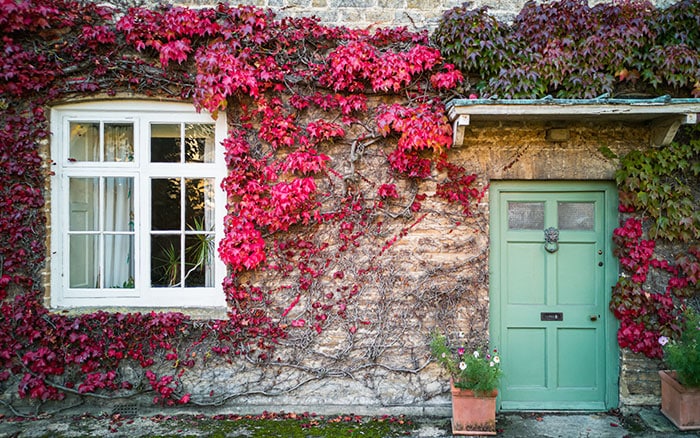
First of all, you can always grow vertically if space is tight. Use your fences, walls and home front to support climbers to grow. Clematis, jasmine and honeysuckle can all be added at the base of a wall or trellis. Plants such as ivies and Virginia creepers will cling to surfaces independently. Honeysuckle or clematis need a framework, like a trellis. Once established on external walls, climbing plants will insulate your home in winter and summer months to help with the heating bill and also offer great nesting for your garden birds.
Easy peasy pots
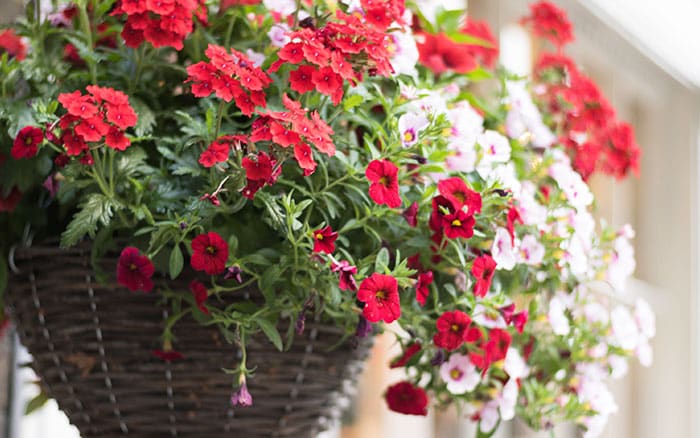
Position pots on your paved areas with pots. This will give uplifting pops of colour but tall planting, like conifers or trained lollypop bay trees or patio roses and lavender will look amazing.
Spring-flowering primulas or violas can be added to low-lying pots or hanging baskets of any size, so they’re a really easy win.
You can keep your pots going all year round by visiting your local garden centre and seeing what in-season plants take your fancy. Not only will these serve an uplifting welcome home every day, but plants naturally filter pollutants from the air, so a few strategically-placed window boxes can do a world of good for keeping our homes healthy indoors too.
Blanket brick
If you want to include a carpet of interest to break up dull brickwork, look no further than low-growing forget-me-nots, which quite often self-sow in paving cracks and can be very hardy to footfall. The bright blue flowers have yellow centres and give an ornamental spread throughout spring and summer.
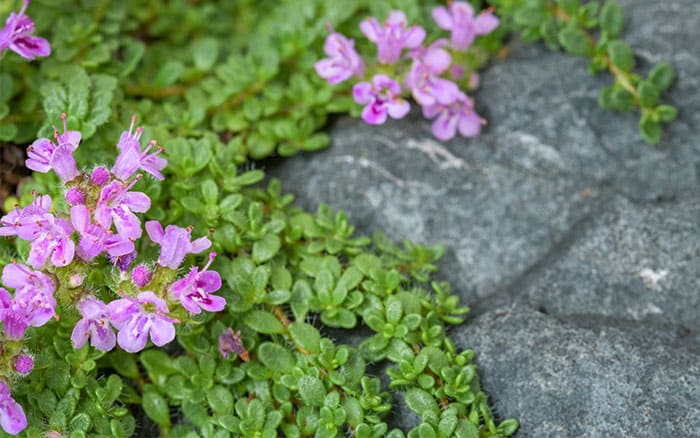
For something with a little extra touch, go for mat-forming growth that also gives a kick of scent too. Creeping thyme is perfect for this. It is quite happy to spread out over stone and roots and will withstand footfall—plus the foliage is fantastically fragranced. Else, Chamomile nobile ‘Treneague’ is often used to create a chamomile lawn as it’s aromatic when crushed. Not only are these sure to bring sensory satisfaction but plants like are a low-maintenance way to help the wider eco-system and support local wildlife—even providing nectar sources for bees when they flower.
Paving picks
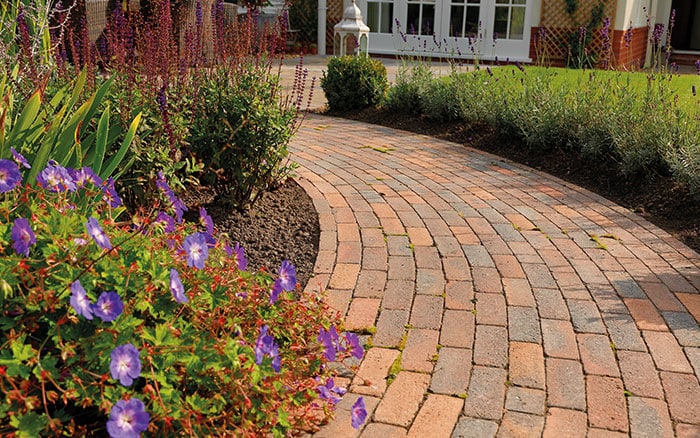
One perfect solution for front gardens is a hard surfacing product that’s crosshatched; designed to allow for natural growth to poke through. Cobblestone or mosaic-style brickwork also allows for natural self-seeding of plants, and naturalistic planting like this can look really beautiful.
For back garden stoops, patios and courtyards that may suffer from waterlogging or drought, clever design can work in sync with your garden’s fauna and flora. For instance, natural stone products are a great way to keep things ticking along nicely. Not only is it strong and long-lasting, but limestone aggregate also drains really well and gravel has similar benefits. Or maybe you want the paving to direct water onto lawns or borders—this can work really well if these areas are planted up with thirsty plants, like hostas. Design can play a big part in getting your hard landscaping to work best for you. For instance, perhaps you don’t want to pave straight across the lawn and would benefit from a stepping-stone effect for access without losing out on lawn surface area.
Tip:
Save your unwanted wellie boots from the skip.
Make a draining hole and use them as planters come the spring! You can nail them to the fence and fill with trailing plants.
With a little tweak here and there, you’ll find a perfect fit between sleek urban designs and family functionality, alongside eco-friendly and ornamental vegetation; a modern-day twist on marvellous Mother nature.
Happy gardening everyone!
Reader questions
How can I stop my pond from freezing over and help my fish?
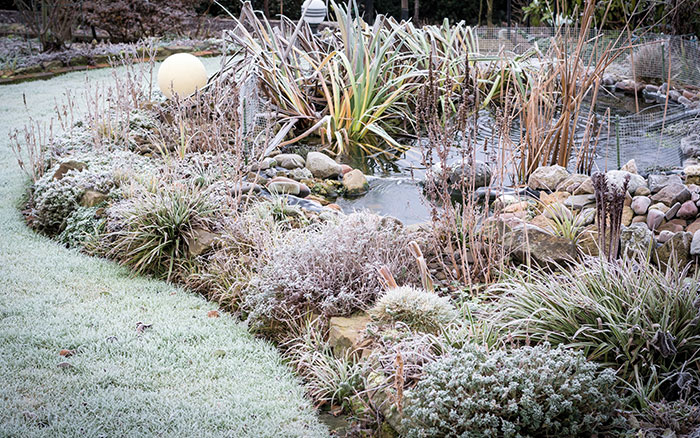
Stop water from freezing over by placing a tennis ball, football or empty 1-2 litre water bottle (depending on the size of the pond) on the surface and then remove from the ice, where they will have left a hole. This helps oxygens levels for your pond fish, but oxygen levels can also be improved by circulating the water with a pump.
Do winter flowers still need deadheading?
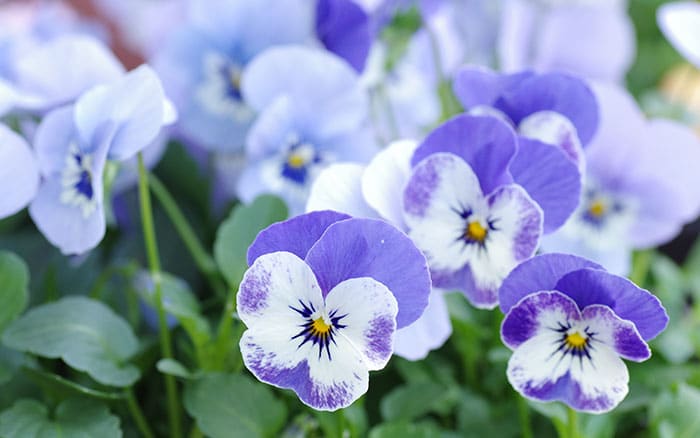
Yes, winter pansies and other winter flowering vegetation will benefit from deadheading over winter. This will keep them looking great throughout the dormant season to provide some winter interest—keep them shielded from frost and they will last right through to spring. If blooms are spent, you may wish to keep seed heads in place, like rosehips, as food for birds.
David Domoney is a Chartered Horticulturalist, Broadcaster, and Author. David has worked with a number of the UK’s leading garden retailers as a plant buyer and strategic consultant. With more than 30 years experience, in horticulture, David is as passionate about plants now as he was when he bought his first plant at a village fete.

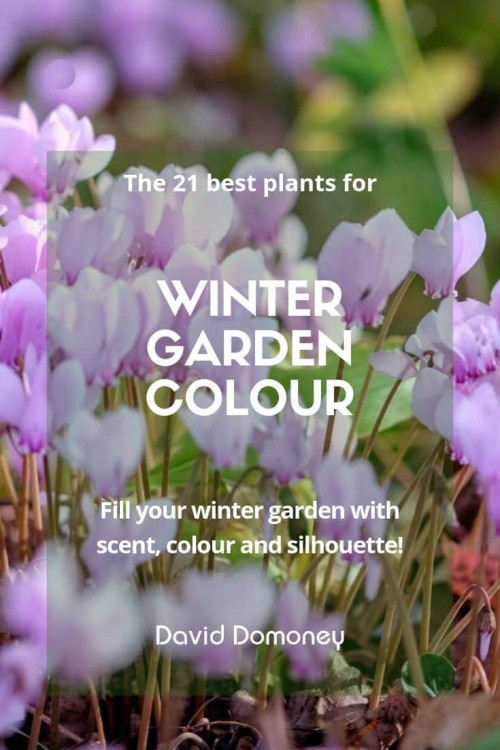





Leave A Comment